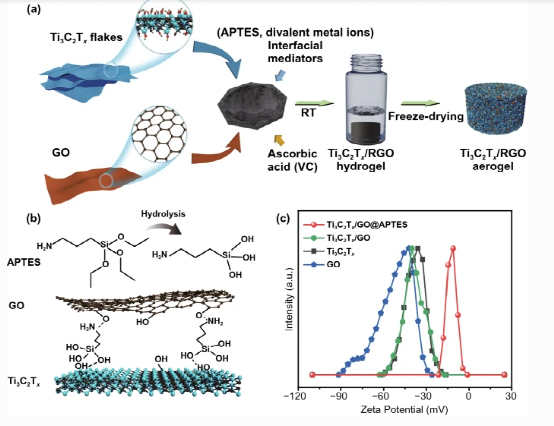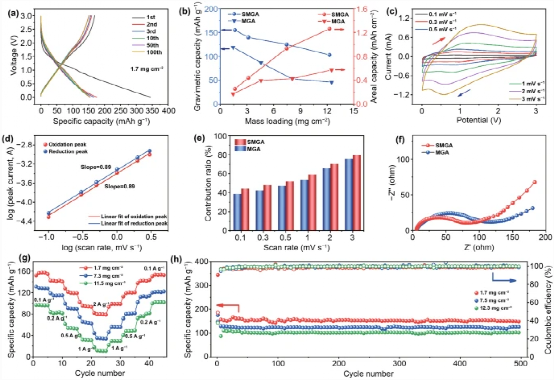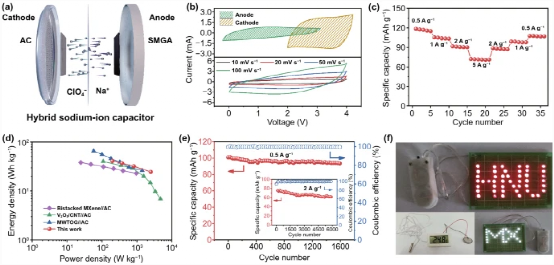MXene aerogel prepared at low temperature for electrochemical sodium storage
Full text at a glance
The low-temperature assembly of MXene nanosheets into a three-dimensional (3D) solid aerogel solves the critical stability problem of nano-components during the manufacturing process, which is essential to transform the fascinating properties of nano-scale into macro-scale practical applications.
In this work, suitable crosslinking agents (amino-propyltriethoxysilane, Mn2+, Fe2+, Zn2+ and Co2+) are used as interfacial media to design the interlayer interaction to realize graphene oxide (GO) at room temperature. Assist in the assembly of Ti3C2Tx MXene aerogel.
This elaborate aerogel structure not only inhibits the oxidative degradation of Ti3C2Tx, but also generates a porous aerogel with high Ti3C2Tx content (87wt%) and robustness, thereby ensuring that Ti3C2Tx nanosheets can function as integrated functional materials. Accessibility and operational reliability.
Combined with further sulfur modification, Ti3C2Tx aerogel electrode as an independent negative electrode for sodium ion storage shows promising electrochemical performance. Even with an ultra-high load mass of 12.3 mg cm-2, a high area capacity of 1.26 mAh cm-2 was achieved at a current density of 0.1 A g-1, which is of practical significance.
This work conceptually proposes a new method to play the maximum surface function of MXenes in a 3D overall form, and can become an inspiring scaffold to promote the application of MXenes in different fields.
Graphic quick overview

Figure 1 Preparation method

Figure 2 Sodium storage performance

Figure 3 Sodium ion capacitor
This information is sourced from the Internet for academic exchanges only. If there is any infringement, please contact us to delete it immediately.
+86-18915413828(WhatsApp&WeChat)
Previous: Wu Shuilin/Liu Xiangme


